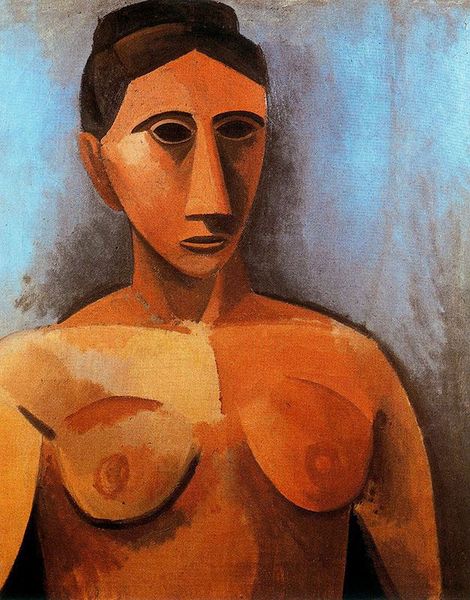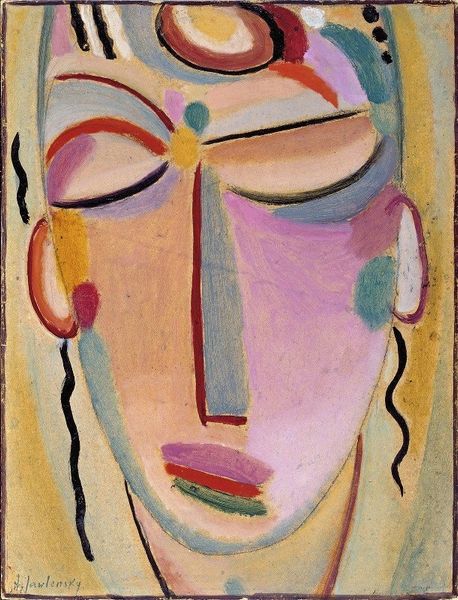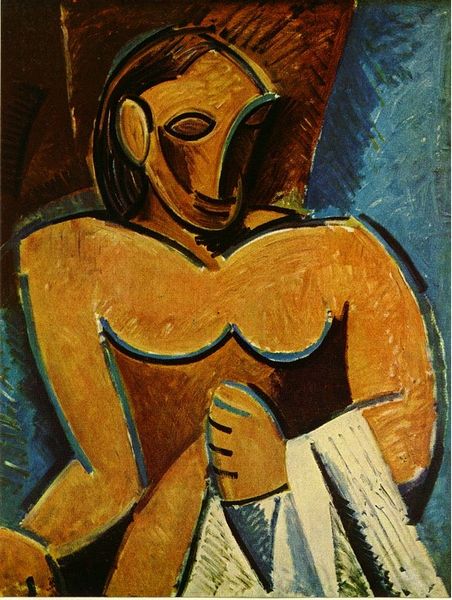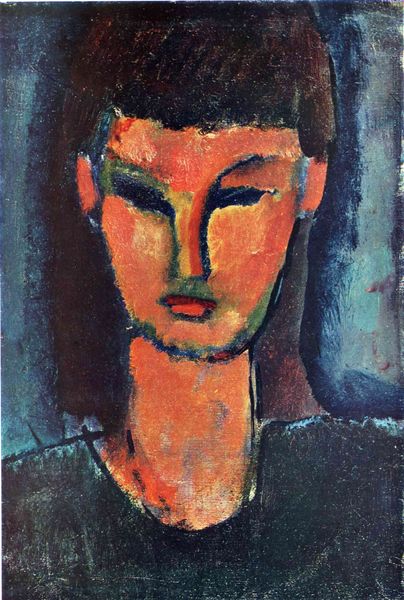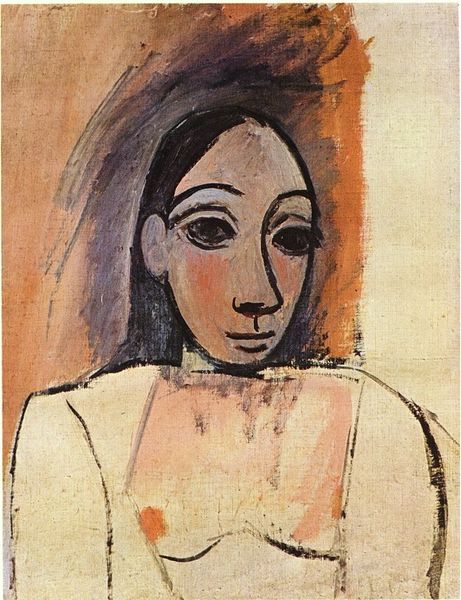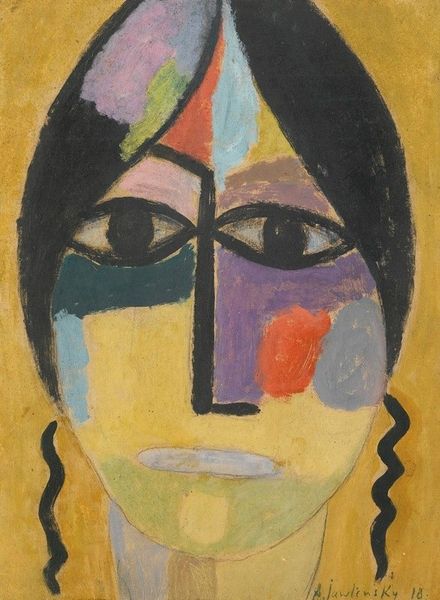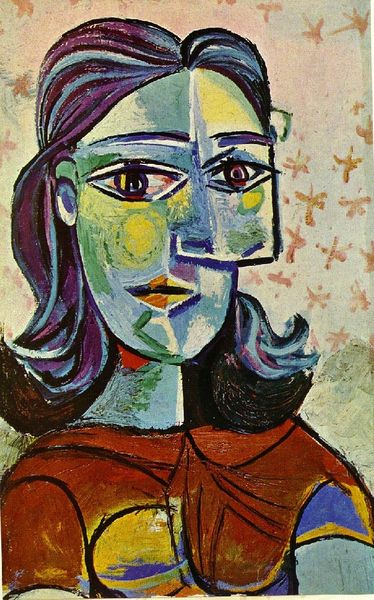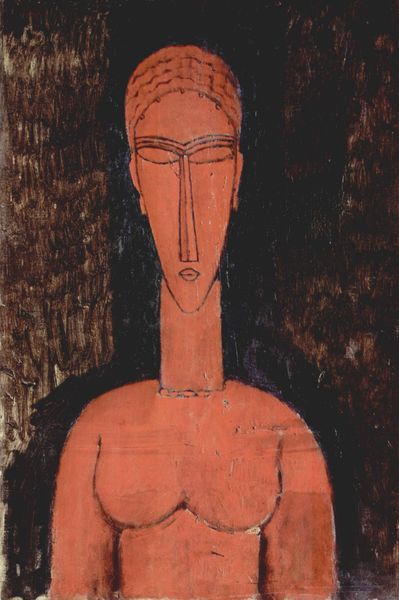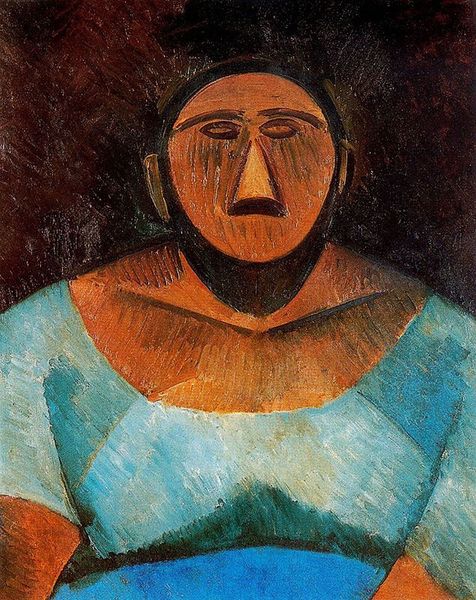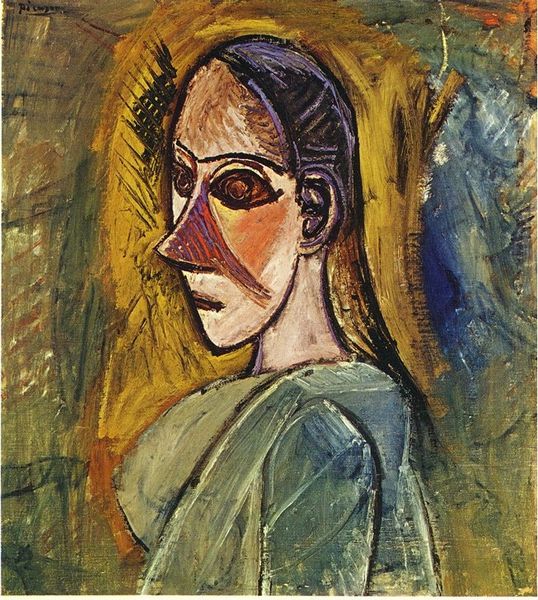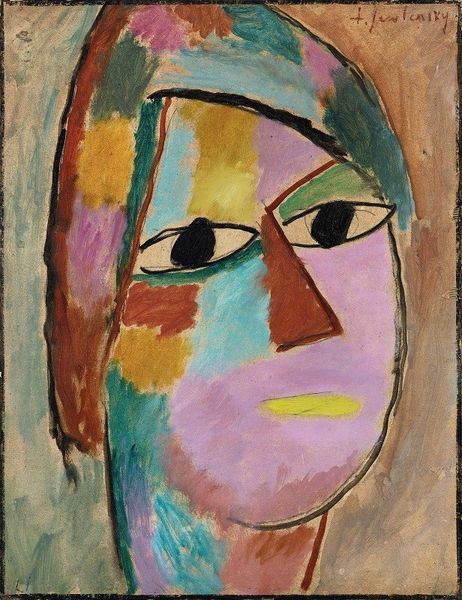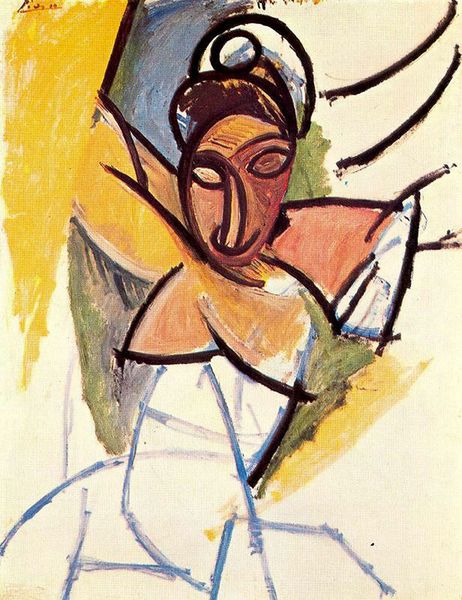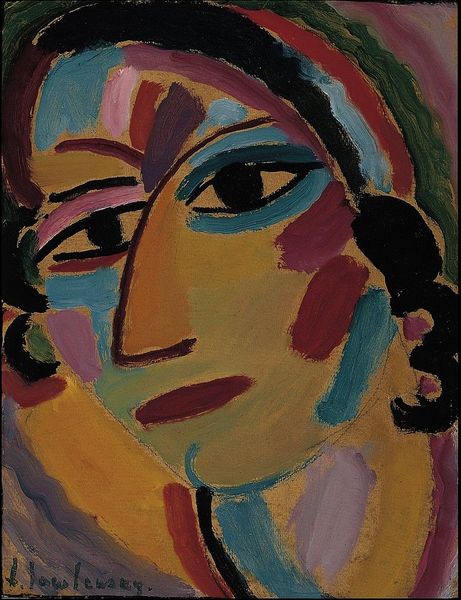
Dimensions: 61 x 46.5 cm
Copyright: Public domain US
Curator: Here, in the Hermitage Museum, we see Picasso’s "Nude (Bust)," completed in 1907, an oil painting that presages his explorations into Cubism. Editor: Woah, I am immediately struck by this sense of quietude in it. Her eyes are closed; she almost seems to be in a trance, painted in earthy, muted colors. It’s striking for such a bold artist, but that heavy brushstroke does carry the weight of someone in deep introspection. Curator: Precisely, the painting itself manifests a pivotal moment in Picasso's career. Consider the influences converging: the simplification of form drawing from Post-Impressionism alongside an undeniable nod to African masks. You see, Picasso sought a departure from classical representation, reflecting his fascination with non-Western aesthetics, thus decentering a traditional art production and paving a way for abstraction. Editor: I can't help but wonder what emotions Picasso was trying to convey by reducing the human form to basic geometric shapes. Does the lack of distinct features represent a sort of detachment from identity or a reaching towards something universal? Perhaps it's even the subject’s interior state, filtered through the painter’s imagination. Curator: We have to address, of course, that the subject's "nudity" engages with historical art practices while subverting academic expectations through its execution, reflecting not a mere aesthetic choice but a negotiation of power between artist, model, and viewer, further disrupting traditional systems of artistic production and labor. Editor: So, rather than passively observing, we are now forced to confront the gaze itself! This painting makes you pause, ponder what "seeing" really means. Maybe beauty exists precisely in the artist’s re-visioning, his ability to reveal the concealed inner reality. That sort of disruption tickles my artistic soul. Curator: Indeed, from the standpoint of historical materialism, the means by which such an image gets made matters. We need to keep exploring the intricate webs connecting materials, production methods, cultural context and the critical reception that shapes art. Editor: I see the canvas as both an historical document and emotional vessel – a point of convergence between Picasso's subjective feelings and larger artistic forces that are worth delving into!
Comments
No comments
Be the first to comment and join the conversation on the ultimate creative platform.
